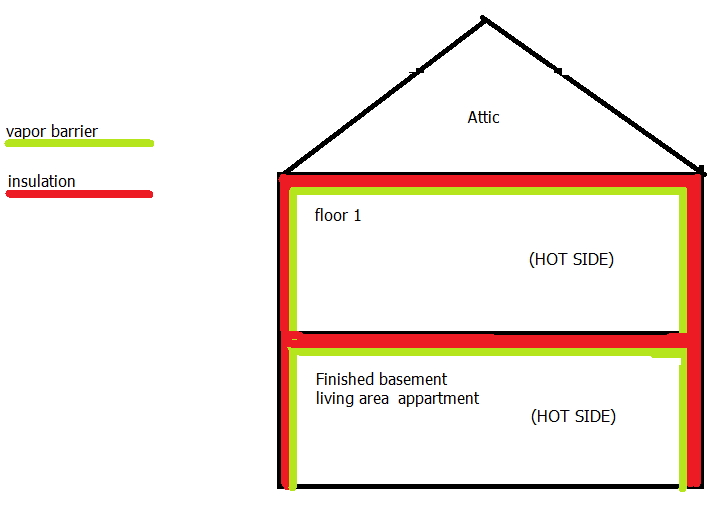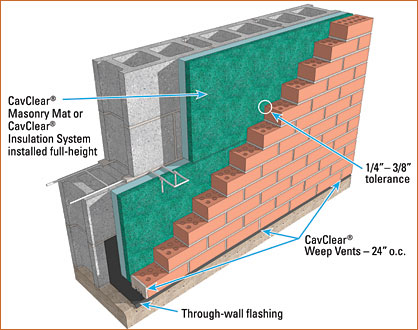Paper faced insulation has the added benefit of providing a moisture barrier that keeps water from being absorbed by the wall or into the rest of the home.
Insulation does moisture barrier go towards floor or away.
Regardless of whether fiberglass insulation is installed in a wall attic or crawlspace.
Think of a shoe box.
In the worst case moisture can actually freeze within the walls accumulating until a thaw melts it and causes visible damage to your home such as wall or ceiling staining.
However as an air barrier it should be on the warm side of the insulation layer.
Our horrible crawlspace above shows foil faced fiberglass insulation installed with the vapor barrier facing down towards the wet crawlspace floor this is an example of backwards incorrect cold side vapor barrier installation that invites moisture condensation and even mold contamination see mold in fiberglass insulation inside the fiberglass insulation.
The paper facing should always face toward the inside of the home.
That s because the paper contains a layer of asphalt adhesive which prevents water vapor from passing through it.
In any case the vapor barrier must point to the warm side.
In most cases this water vapor will not cause any problem because attic ventilation will carry excess vapor away.
Another important factor to consider when choosing your insulation type is what your state guidelines say should be used.
The paper barrier is intended to retard both diffusion and airflow.
What is the difference in a moisture barrier under a slab or a moisture barrier under a floor system.
We know humidity and understand air barriers.
Video of the day.
Vapor barriers are sheets of plastic or other material placed on one side of insulation sheets.
As mentioned earlier batt and roll insulation come with a vapor barrier attached.
Roxul insulation is a stone fleece protection item for use in inside wall partition of residential and steel stud development where predominant impervious to fire and acoustical execution are required.
This barrier is meant to keep moisture from getting to the insulation in the walls and ceilings and it is required by building codes when insulating most houses.
Condensation of moisture can be a concern when a radiant barrier is installed on the attic floor directly on top of conventional insulation.
This non burnable lightweight item has phenomenal acoustical hosing properties and is dimensionally steady which makes it perfect for fitting into walls roof and floor applications.
Generally in a well vented attic with insulation in the floor the vapor barrier is under that insulation on the warm side or towards the upper surface of the ceiling drywall or plaster on the underside of the floor joists.
A vapor barrier is designed to keep moisture in your home from getting inside your walls.
So it seems to me that it does indeed matter whether the paper is in or out.
How does paper insulation work.




























